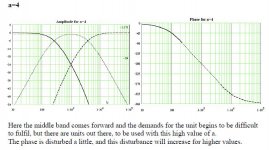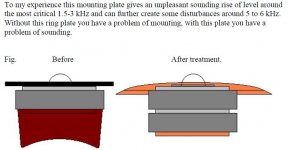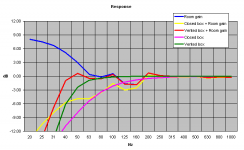However much you may "expect" me to do, the folded TL design that seaco built is simply too flawed IMO to be able to recommend any driver having any chance of working satisfactorily. If seaco chooses a driver I can do some exploratory modeling pretty quickly, but there is little likelihood they'd work in his already started cabinet. There's nothing wrong with trying to do the very best one can even though the outcome will never be perfect.
Paul
Paul
What I expect from you, Paul, being the TL man, is a simple recommendation that gives Seaco the best chance of making his "Go for it" design work with a 6" bass.. 😀
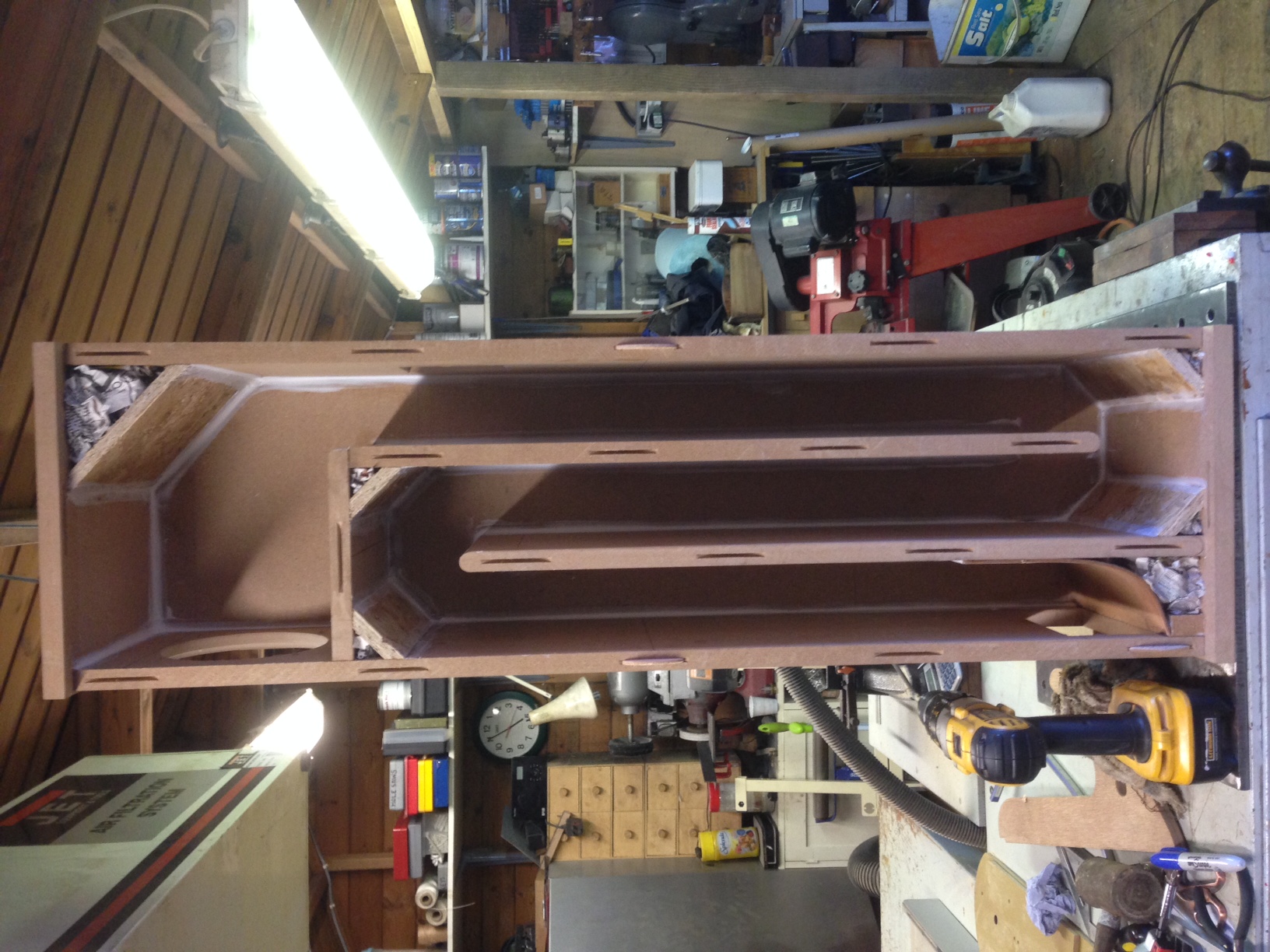
Shorter line presumably, but really this isn't my area of expertise. I really despair of the perfectionist who thinks that any optimum solution exists. All is compromise with speakers.
My own view is that all bass loadings are compromised. NOBODY at diyaudio.com wants to discuss Steen Duelund's brilliant ideas about the room and the box.
But I got it. Trade-offs in a word. 😎
What I expect ...........is a simple recommendation that gives Seaco the best chance of making his "Go for it" design work with a 6" bass.
Define 'all' as reactance annulled BLHs 'leave nothing on the table' when it comes to extracting all the point source BW a driver has to offer. The price of course is increasing size with decreasing frequency.
The rest, yeah, it's all about trade-offs.
Hmm, seems I saw his name mentioned long ago on the basslist, but don't recall reading about any of his ideas, 'brilliant' or otherwise unless they were part of some manufacturer's sales propaganda, so which are you referring to and where on-line can I find them to read?
Got plans?
GM
Paul, the thing is, I know what to do with almost ANY 6" paper bass for crossover and reflex box. 15-20L box for sure. 6kHz notch, because it's just how 6" cones work. I'd even guess 30-40Hz Fs.
So why is it so hard to design a "one size fits all" TL? I mean, surely, after a while you get to be like those experienced tailors who can tell your jacket size just from looking at you? 😀
@ GM. I know diyaudio.com is famous for being stingey with praise, but to have never heard of Steen Duelund is shameful.
This man discovered an optimal approach to even-order filters just by algebra. He suggested a spectrum approach to filters, where 2 way blends into 3 way with a mid at varying level with perfect phase alignment. It doesn't address the power loss issues of even order filters, but he was listening on-axis, and it's just how nature works.
http://www.diy-audio.narod.ru/litr/duelund-filter.pdf
His closed box constructions anticipated B&W's Matrix approach. His diffraction ideas include the room, the box and the front baffle. He thought about the mass taper on a cone, and the front plate on a tweeter.
For all that, his broken English is hard to read, and he perhaps missed a trick with some BW3 and series filter designs. But always stimulating to read. 🙂
So why is it so hard to design a "one size fits all" TL? I mean, surely, after a while you get to be like those experienced tailors who can tell your jacket size just from looking at you? 😀
@ GM. I know diyaudio.com is famous for being stingey with praise, but to have never heard of Steen Duelund is shameful.
This man discovered an optimal approach to even-order filters just by algebra. He suggested a spectrum approach to filters, where 2 way blends into 3 way with a mid at varying level with perfect phase alignment. It doesn't address the power loss issues of even order filters, but he was listening on-axis, and it's just how nature works.
http://www.diy-audio.narod.ru/litr/duelund-filter.pdf
His closed box constructions anticipated B&W's Matrix approach. His diffraction ideas include the room, the box and the front baffle. He thought about the mass taper on a cone, and the front plate on a tweeter.
For all that, his broken English is hard to read, and he perhaps missed a trick with some BW3 and series filter designs. But always stimulating to read. 🙂
Attachments
Steve, I also think that the two box image requires qualification, vis-a-vis room size vs compliance volume and wavelength etc. That said, the concept is elegant, but maybe like looking at baffle geometry in isolation.
Good morning, Australia, AllenB! 🙂
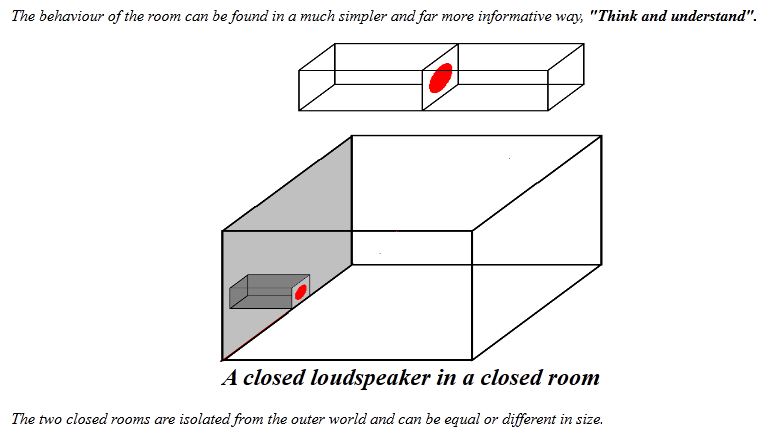
I think it is what it is. Includes every variation on cabinet size and geometry and placement and room reflection you might try.
Did I mention that Steen Duelund was a flat impedance fan too. 😎
But we ought to include room gain too, to be exact.

I think it is what it is. Includes every variation on cabinet size and geometry and placement and room reflection you might try.
Did I mention that Steen Duelund was a flat impedance fan too. 😎
But we ought to include room gain too, to be exact.
Attachments
If I thought is was possible to design a "one size fits all TL" I'd do it and in an instant. I think the best one could hope for is a TL that might work reasonably well across the board with it designed for a fairly narrow range of Fs and Qts values, at least as far as ending up with about the same response shape. Vas and, therefore, the line's volume would ultimately determine the bass response, like F3, however.
Paul
Paul
Paul, the thing is, I know what to do with almost ANY 6" paper bass for crossover and reflex box. 15-20L box for sure. 6kHz notch, because it's just how 6" cones work. I'd even guess 30-40Hz Fs.
So why is it so hard to design a "one size fits all" TL? I mean, surely, after a while you get to be like those experienced tailors who can tell your jacket size just from looking at you? 😀
@ GM. I know diyaudio.com is famous for being stingey with praise, but to have never heard of Steen Duelund is shameful.
This man discovered an optimal approach to even-order filters just by algebra. He suggested a spectrum approach to filters, where 2 way blends into 3 way with a mid at varying level with perfect phase alignment. It doesn't address the power loss issues of even order filters, but he was listening on-axis, and it's just how nature works.
http://www.diy-audio.narod.ru/litr/duelund-filter.pdf
His closed box constructions anticipated B&W's Matrix approach. His diffraction ideas include the room, the box and the front baffle. He thought about the mass taper on a cone, and the front plate on a tweeter.
For all that, his broken English is hard to read, and he perhaps missed a trick with some BW3 and series filter designs. But always stimulating to read. 🙂
Okay this has gone totally beyond me, I have put the speakers back into the Missions and sold them I would love to learn how to work out speaker volumes etc. so if anyone could tell me in layman's terms how I can do this I'd really appreciate it?
Truthfully, Seaco, you listened to the wrong people. 😱
Your design was not bad at all, IMO. Particularly disappointing after you put in so much good hard work on the cabinets.
You lost confidence. It might have been good, it might have been terrible. Hey what did you have to lose?
My own opinion is that you needed a better crossover, possibly better drivers, not cabinet.
Anyway, study the masters: DIY-Loudspeakers
Your design was not bad at all, IMO. Particularly disappointing after you put in so much good hard work on the cabinets.
You lost confidence. It might have been good, it might have been terrible. Hey what did you have to lose?
My own opinion is that you needed a better crossover, possibly better drivers, not cabinet.
Anyway, study the masters: DIY-Loudspeakers
If you're referring to me or Planet 10 or Scottmoose as being the wrong people when it comes to extensive experience on TLs, how they work and how to design good ones, you're way off base.
Paul

Paul
Truthfully, Seaco, you listened to the wrong people. 😱
Your design was not bad at all, IMO. Particularly disappointing after you put in so much good hard work on the cabinets.
You lost confidence. It might have been good, it might have been terrible. Hey what did you have to lose?
My own opinion is that you needed a better crossover, possibly better drivers, not cabinet.
Anyway, study the masters: DIY-Loudspeakers
You guys realize he has made a version of the bw nautilus right? Just get a good driver for the volume and seal it up.
Seaco
There may be a way to save those cabs! By placing the driver on the opposite side /sealing up the driver hole(s) on existing side.
Then you can get your driver a suitable length along the line.
There may be a way to save those cabs! By placing the driver on the opposite side /sealing up the driver hole(s) on existing side.
Then you can get your driver a suitable length along the line.
- Status
- Not open for further replies.
- Home
- Loudspeakers
- Multi-Way
- Just gone for it!
